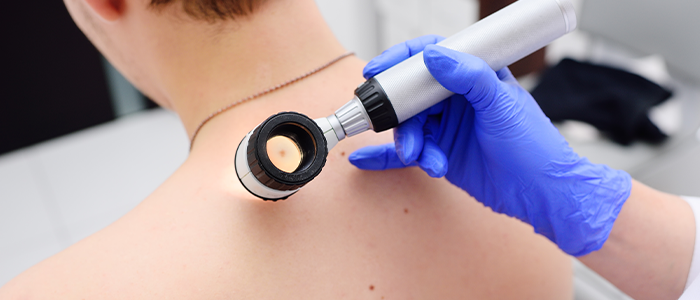
The Sun is the most significant source of energy that the earth receives and the human body needs sunlight as a natural source of vitamin D, along with so many other benefits. With that, there come more significant risks too.
Skin cancer is abnormal and unorderly cell growth on the skin, which tends to spread to other parts of the body. Studies of skin cancer oncologists have recorded that in more than 90% of cases, abnormal skin growth happens due to excessive exposure to the sun. The ultraviolet ray is known to be harmful to the skin and lead to sunburn, tanning, premature aging of the skin, or even skin cancer.
Symptoms
How do you identify the difference between sunburn and the symptoms of skin cancer? Let's look into some of the primary symptoms of skin cancer, such as:
Risk Factors
Most skin cancers, melanoma or non-melanoma, are caused due to sun exposure. We definitely see an increase in the number of skin cancer in recent times. As we grow old, the risk of getting skin cancer grows with it. But it has also registered the trend of an increase in skin cancer in younger people, especially younger women. The environmental changes and the things we are being exposed to on a regular basis play a significant role in the shift. The thing that comes into play in non-melanoma skin cancer is the artificial ultraviolet exposure of young women.
According to Deborah S. Sarnoff, M.D, President of the skin cancer foundation, Most ultraviolet rays from the sun can penetrate through the cloud cover and fog. Winter sun can cause significant damage, especially at high altitudes. Because snow can reflect up to 80% sunlight, the risk factor grows higher in winter.
Sun Safety Habits During Winters
One must know the importance of sun protection during winter. Don’t let the winter sun fool you. Melanoma is the more aggressive kind of skin cancer that only occurs due to sun exposure. Because there is a high density of UV radiation in winter months than in summer months. Dr. Teresa Patrella, Head of the melanoma group at Sunnybrook's Odette Cancer Center, has confirmed that overexposure to the sun can cause serious harm to the skin. Especially people who are active in snow activities during the winter season, are unaware of the fact that snow reflects more sunlight than water or dry deserts. Any skin that is exposed to the sun needs to be protected with a layer of broad-spectrum sunscreen with an SPF of at least more than 40 and sun-protective clothing to protect as much area of your body as possible.
Conclusion
As Autumn ends and winter starts gradually, it may be tempting sometimes to sit in the sun to take in the warmth. The skin is the largest organ of our body, and the primary function of the skin is to protect other organs. While it may be tempting to skip applying sunscreen, it's crucial to remain attentive throughout the winter months when the sun isn't directly above. This winter, check your skin at the best skin cancer hospital. At CTI, we promote the daily use of sun protection, also as early detection and treatment of skin cancer. Book your slot now.